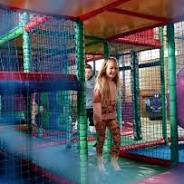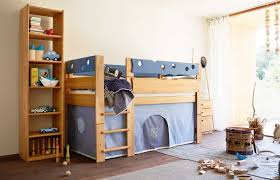
Exploring the Exciting Indoor Play Area Adventures
The Benefits of Indoor Play Areas for Children
Indoor play areas are not just a place for children to have fun and burn off energy – they also offer a range of benefits that contribute to their physical, social, and cognitive development.
Physical Development
Indoor play areas provide children with the opportunity to engage in active play, which is essential for their physical development. Climbing structures, slides, and obstacle courses help improve their coordination, balance, and strength. These activities also encourage children to be more physically active, promoting a healthy lifestyle from a young age.
Social Development
Playing in indoor play areas allows children to interact with others their age, helping them develop important social skills such as communication, cooperation, and problem-solving. They learn how to take turns, share toys, and work together towards common goals. These interactions build confidence and self-esteem as children navigate social situations in a safe and supervised environment.
Cognitive Development
Indoor play areas stimulate children’s cognitive abilities through imaginative play. Role-playing in pretend kitchens or shops encourages creativity and language development. Puzzles, games, and sensory activities help improve problem-solving skills and critical thinking. These experiences lay the foundation for cognitive growth and academic success later in life.
Sensory Stimulation
Many indoor play areas incorporate sensory elements such as bright colours, different textures, music, and lights. These sensory experiences engage children’s senses and promote exploration and curiosity. Sensory stimulation is crucial for brain development in young children and helps them make sense of the world around them.
Safe Environment
Indoor play areas are designed with safety in mind, providing padded floors, soft edges on equipment, and trained staff to supervise the play area. This creates a secure environment where parents can relax knowing that their children are playing safely while still having fun.
In conclusion, indoor play areas offer numerous benefits for children’s overall development. From physical fitness to social skills and cognitive growth, these spaces provide a well-rounded experience that nurtures children’s minds and bodies. So next time you’re looking for a fun activity for your child, consider visiting an indoor play area where the possibilities for learning through play are endless!
7 Essential Tips for Creating a Safe and Engaging Indoor Play Area
- Ensure the play area is well-ventilated for good air circulation.
- Use soft, cushioned flooring to prevent injuries from falls.
- Regularly clean and sanitize all toys and play equipment to maintain hygiene.
- Provide a variety of age-appropriate toys and activities to keep children engaged.
- Create designated areas for different types of play (e.g. quiet corner, active area).
- Supervise children at all times to ensure their safety and well-being.
- Display clear rules for behaviour in the play area to promote positive interactions.
Ensure the play area is well-ventilated for good air circulation.
It is crucial to ensure that the indoor play area is well-ventilated to promote good air circulation. Proper ventilation helps maintain a fresh and healthy environment for children to play in, reducing the risk of stuffiness and ensuring that they can breathe comfortably while engaging in physical activities. Adequate airflow also helps regulate temperature levels, creating a more pleasant and enjoyable experience for both children and caregivers. By prioritising ventilation in the play area, you are not only enhancing the overall comfort but also contributing to a safer and healthier play environment for everyone involved.
Use soft, cushioned flooring to prevent injuries from falls.
To ensure a safe play environment for children in indoor play areas, it is essential to use soft, cushioned flooring to prevent injuries from falls. Soft flooring materials such as foam or rubber provide a protective surface that absorbs impact and reduces the risk of injury if a child falls while playing. By choosing cushioned flooring, parents and caregivers can have peace of mind knowing that their children can enjoy active play without the worry of serious accidents. Prioritising safety through proper flooring choices is key to creating a secure and enjoyable indoor play space for children.
Regularly clean and sanitize all toys and play equipment to maintain hygiene.
Regularly cleaning and sanitizing all toys and play equipment in indoor play areas is essential to maintaining a hygienic environment for children. By keeping these items clean, we can help prevent the spread of germs and bacteria, ensuring that children can play safely and without the risk of getting sick. Regular cleaning routines not only promote good hygiene practices but also demonstrate a commitment to providing a healthy and enjoyable play experience for all visitors.
Provide a variety of age-appropriate toys and activities to keep children engaged.
To ensure that children remain engaged and entertained in an indoor play area, it is essential to offer a diverse range of age-appropriate toys and activities. By providing a variety of options tailored to different developmental stages, children are more likely to find something that captures their interest and keeps them actively involved. From sensory play for younger children to more complex puzzles and games for older ones, offering a mix of activities ensures that every child can participate in stimulating and enjoyable experiences that cater to their individual needs and abilities.
Create designated areas for different types of play (e.g. quiet corner, active area).
Creating designated areas for different types of play within an indoor play area is a fantastic way to cater to children’s diverse needs and interests. By having specific zones such as a quiet corner for reading or calming activities and an active area for energetic play, children can choose activities that suit their mood and preferences. This approach not only encourages a variety of play experiences but also promotes self-regulation as children learn to navigate between different play spaces based on their current needs. Having designated areas enhances the overall play environment, ensuring that every child can engage in activities that align with their individual preferences and abilities.
Supervise children at all times to ensure their safety and well-being.
It is crucial to supervise children at all times while they are playing in indoor play areas to ensure their safety and well-being. By actively monitoring their activities, adults can prevent accidents, intervene in conflicts, and provide assistance when needed. Supervision also allows caregivers to guide children in following the rules of the play area and encourage positive social interactions with other children. By staying vigilant and engaged, adults can create a secure environment where children can play freely and enjoy their time while feeling supported and protected.
Display clear rules for behaviour in the play area to promote positive interactions.
Displaying clear rules for behaviour in the indoor play area is essential for promoting positive interactions among children. By setting guidelines that outline expectations for how children should behave, such as taking turns, sharing toys, and being respectful to others, you create a structured environment that encourages cooperation and social skills development. Clear rules also help children understand boundaries and foster a sense of responsibility for their actions, leading to a harmonious and enjoyable play experience for all.


